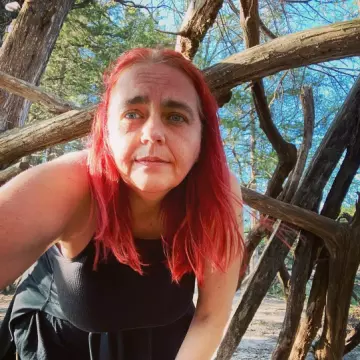#StudentLife
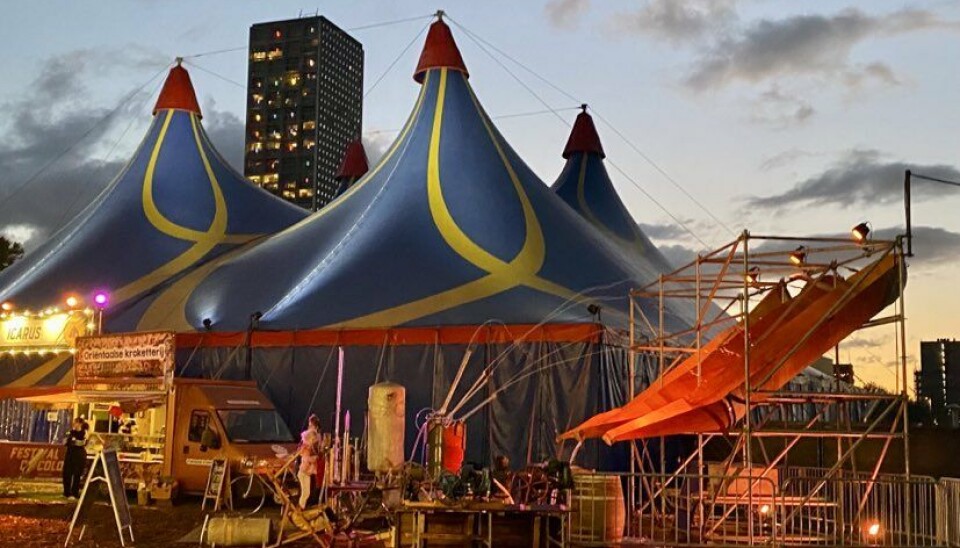
Visiting Festival Circolo: A Tale of Two Studies
Academics, performance, parenting… it’s all about perspective.
There are two things I love about the circus. The first is that circus makes the impossible possible. Through discipline and artistry, it transforms ordinary humans into extraordinary beings who can fly, fold, and fling themselves into magical spaces that most of us can only dream of entering. As a parent, this is kind of what it’s been like to watch my kid grow up. The second is that circus is an embodied form of storytelling, where the need for language dissolves against the expressive physicality of the form. It can explore states of being that go deeper than language, that engage the empathetic senses in ways that make us cringe and yearn and ache and agitate, even when it’s not us there up on stage. As a student of multilingualism, I can’t help but be fascinated by this phenomenon.
One of the cool things about both my daughter and I being international students at the same time is that we get to share and compare our experiences. I’m studying multilingualism in Norway. Solveig’s studying circus in the Netherlands. I’m living in student housing. She’s living in a private collective. I read so much that I dream in citations. When she dreams, it’s about training. We talk about student life, about our classes and projects and thematic obsessions. I like how we end up cross-pollinating across fields. Last year, while she composed an aerial act around the theme of app-based language learning, I wrote a paper on embodied metaphor. There’s some interesting synergy there, and it’s nice that we can challenge one another to think across disciplinary boundaries.
Getting There
When Solveig WhatsApped to invite me to her show at Festival Circolo, the biggest annual circus festival in the Netherlands, there was no hesitation. Working on the literature review for my thesis in multilingualism, I’ve been living in my head lately. Not only would I get to see my kid, I’d also get a chance to “lighten up” and gain a little perspective on things. I booked the cheapest Friday night flight I could find from Oslo to Amsterdam and packed a bag that would fit under the seat (no extra baggage fees). From Amsterdam, I took a train via Rotterdam to the college town of Tilburg in the south, where Solveig is getting her bachelor’s degree in circus and performance art.
I arrived in a rainstorm late on Friday night and walked about thirty minutes through the worst of it. Everything I owned was drenched by the time I got to Solveig’s place at around two in the morning. Though we hung my things out on a drying rack, all of my clothes were unfortunately damp and cold for the rest of the weekend. I can be philosophical about it now. Perhaps, to leave behind the academic me, I had to locate the me that was shivering in the rain. Next time, though, I’m bringing a raincoat.
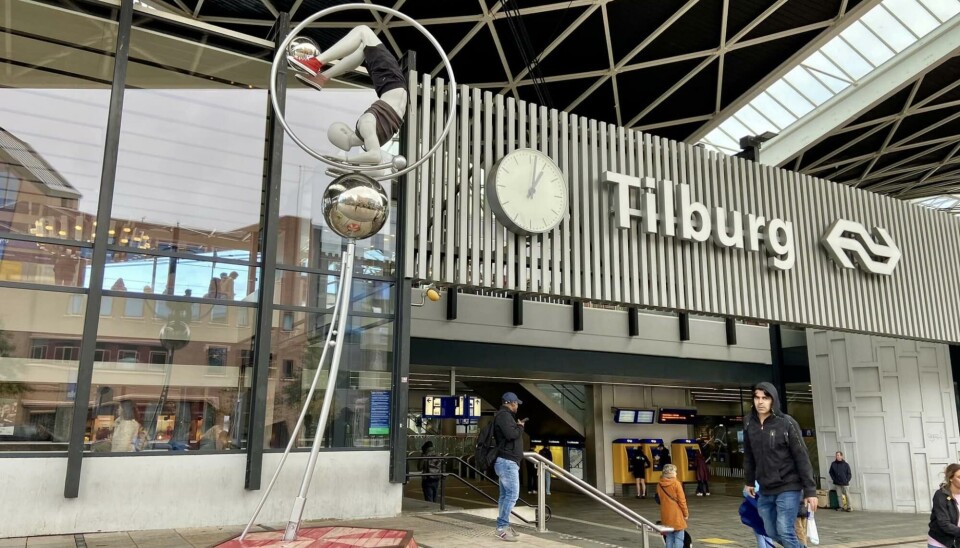
A Day at the Festival
Festival Circolo is an annual contemporary circus festival that mostly takes place in Spoorpark, just a short stroll from the Tilburg central train station. I would only get to experience a day of it, but counted over 20 different shows over the ten-day festival span. As we walked between tents, my daughter explained that there’s basically three styles of circus. There’s traditional circus, where there’s a bit of separation between acts (trapeze, wire, etc.) and you clap at all the tricks. There’s new circus, which came with the discovery that circus can tell a story theatrically. And then there’s contemporary circus, which builds off of the first two and leans into improvisational, experimental, and expressive forms. This will make more sense as you keep reading, but you should know that I walked away from each show with a completely different takeaway revelation.

The first show I saw was the one Solveig was in, along with her (very multilingual) second-year classmates at Fontys Academy of Circus and Performing Art. Actually, I saw it twice, because I wanted to soak it all up. The unbearable lightness of being sketched out the human micro-moments and dynamics of people sharing spaces and hovering just above, with elegant transitions between vignettes featuring lyra hoop, straps, pole, juggling, wire, acro, rope, and more. What stood out here were alternating portraits of engagement and detachment, with excellent technical ability grounding it all.
My takeaway here, as I watched my daughter and her peers perform, was that we are complicated creatures on this earth, moving with and around one another. Life is about displacements and possibilities. Sometimes to move forward, we just need to keep moving.
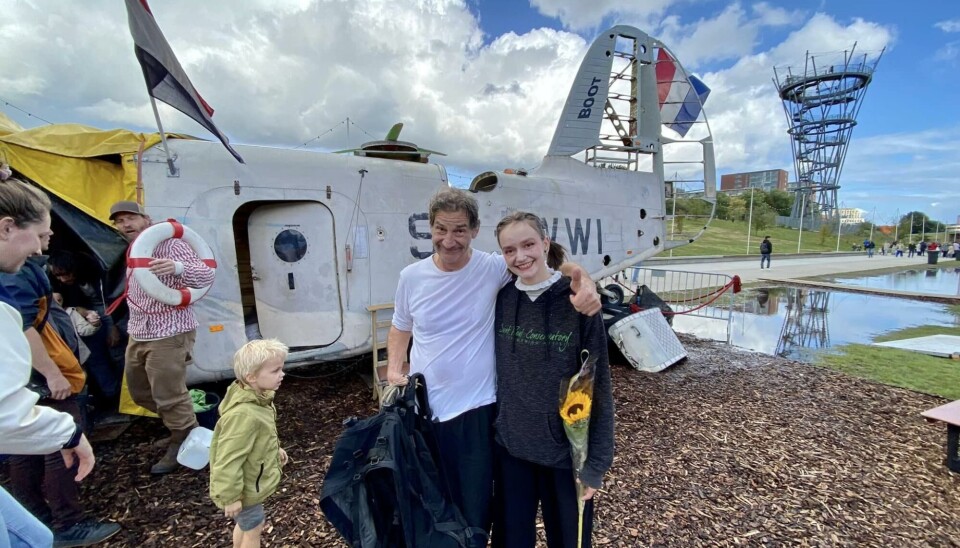
After her shows, Solveig changed out of her costume and we wandered. As we were contemplating buying food at one of the nearby stands, a guy approached us and asked us if we had ten minutes extra to spare, if we wanted to come see his play, BOOT (Vincent de Rooij / Daan Mathot). “We’re not circus performers,” he said self-deprecatingly, “I don’t even know why they invited us to be here.”
We followed him to a small cargo airplane, where we climbed behind a curtain and squeezed into the last two open seats. “We’ve been to a lot of weird things together,” I whispered into Solveig’s ear. “Yeah, I know,” she laughed. Yet, from the moment the curtain opened, we were enthralled. In the ensuing nine minutes, the airplane transformed into a fishing boat, a submarine, and a smuggling aircraft, with three different costume changes, lots of comedy, and a guy shaking the vessel from the outside for dramatic effect. Solveig was pulled out of her seat and into the pilot’s spot for the play’s finale.
My takeaway: Where there is context, there is little need for language. Within contextual constraints, the roles that we occupy become clear. We comprehend and respond to moments as they come.
Intermission
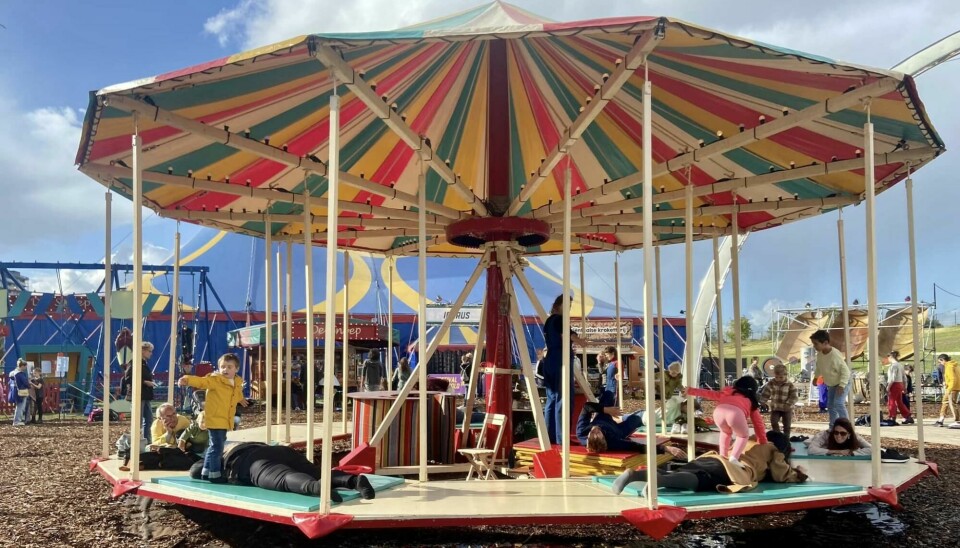
We had a little time before the next show started, so Solveig and I strolled around aimlessly for a bit, stopping to watch the human merry-go-round attraction from Acrobaat op de Molen called You are the performer!. Parents here are invited to become the creatures upon which their children ride, and I have to say, it was pretty adorable. Solveig was around this age (almost three) when she first started doing circus. This is the kind of stuff we played at when she was little, and it’s interesting to think about how early interests grow with you.
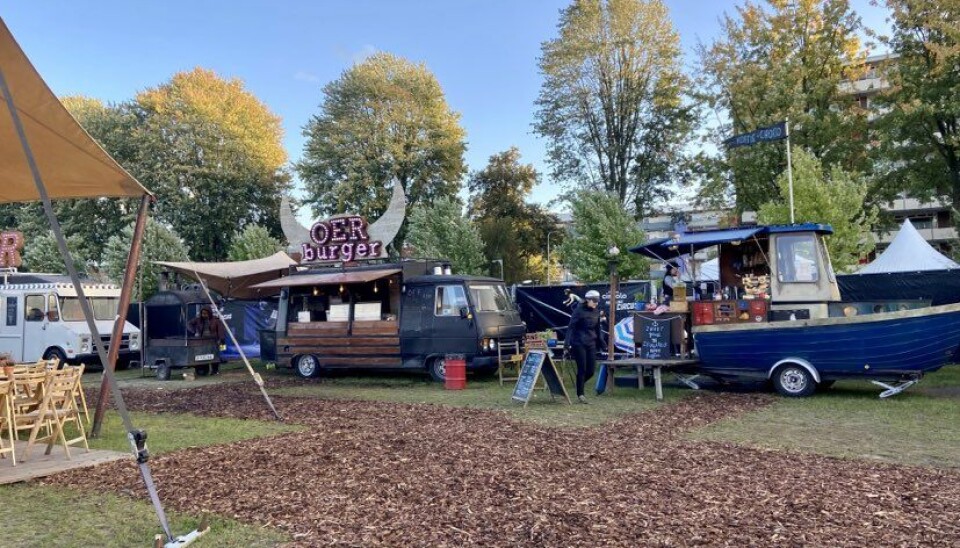
As we wandered, I couldn’t help but notice that this felt like a community event rather than a commercial one. Someone here clearly spent time considering the creative placement of tents and other features; everywhere you turn, there’s a satisfying sense of “circusness” about the place. Even the food vendors brought their own sense of quirkiness to the occasion, with unique stall designs and cheerful service. At night, you can sit on a haybale and warm up next to the glow of a campfire. I couldn’t stop taking pictures. Solveig knows this about me, and has developed a surprising tolerance for it over time.
Part Two

After a beer and some fries with mayo, we headed over to one of the bigger tents to take in a show called La Cosecha (Insurgentes), in which a Latina duo provided rhythmic chemistry, humor, and contact as part of a lovely work-in-progress. The show opened with two individuals sitting in separate chairs, echoing and building on one another’s movements. One of my favorite moments was when one performer rolled around on the floor and began narrating her own contortions, “Now I’m a baby. Now I’m a star,” while the other appeared with a light-up pacifier. From there, they initiated a beautiful sequence where their bodies folded across one another, and their feet braced in pleasing symmetry against the rim of the lyra hoop.
My takeaway: There is a uniquely human delight in recognizing oneself in another, and recognizing another in oneself. Identity is not a monologue, but a dialogue that is continuously unfolding.
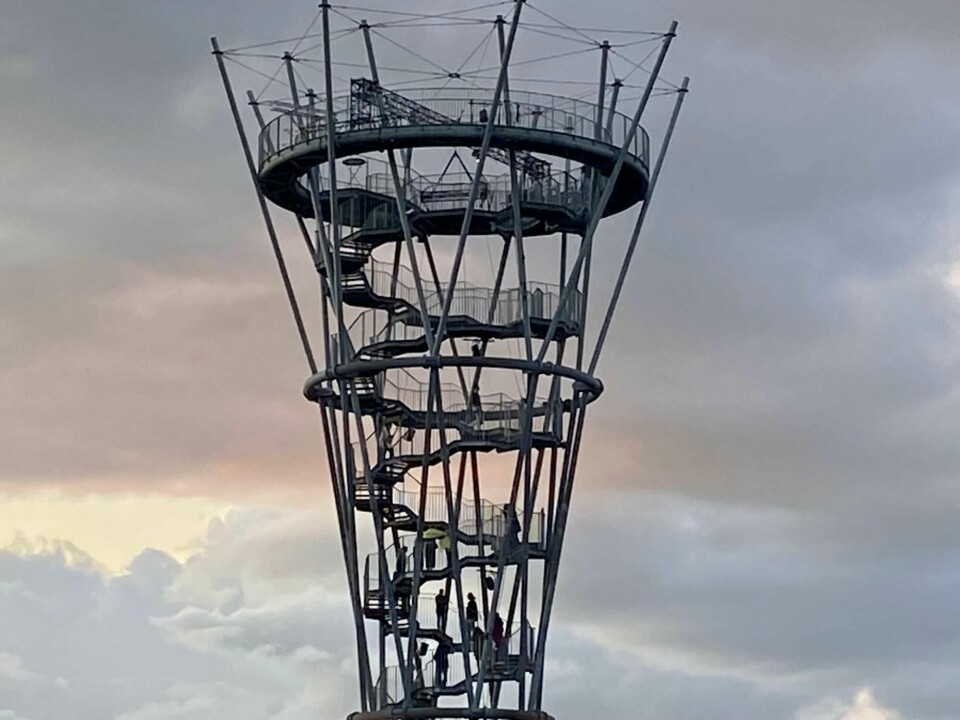
On the way to our next show, we paused to watch Funnel Vision by Company Alud. This site-specific performance was unfortunately sold out before we could get tickets, but it was visually captivating even from where we stood on the sidewalk. Performers in aerial straps, dance, and theater took advantage of this permanent structure known as the Kempen Tower to suspend themselves in the center of their audience. Watching the silhouettes of movement — both performers and spectators, against dramatic clouds, was aesthetically very engaging. It occurred to me that it’s worth wondering where the boundaries of performance are, and how the space of performance is experienced, even from afar.
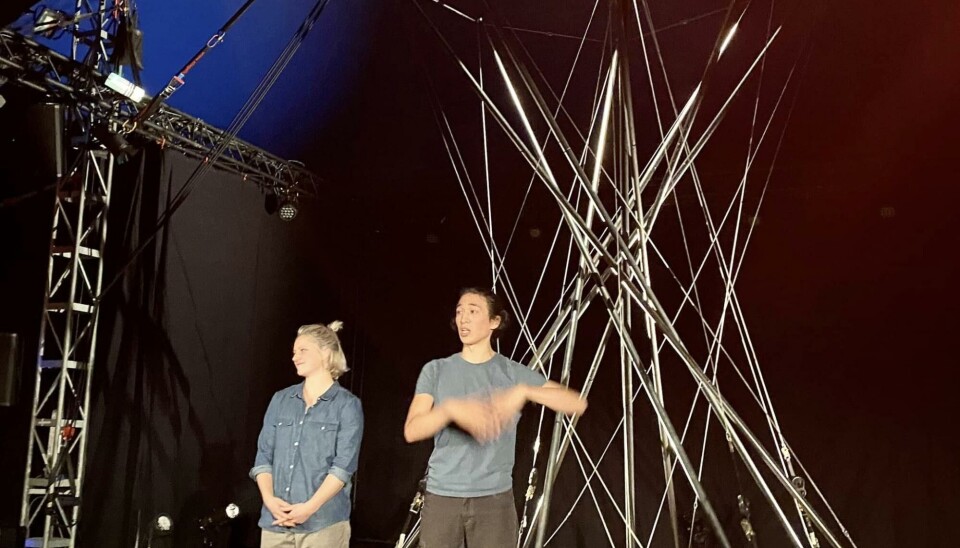
In Structure #1 (The Berkey), a lone performer took on a series of metal poles rigged together such that they resembled a loosely woven haystack. This act was deliberately paced, like slow TV, and the effect was meditative. Each carefully balanced movement occurred at a sloth’s speed, focusing audience attention on the small kinetic shifts of both structure and human. The artist worked her way up and down the swaying poles, sometimes upside down, and we were reminded of anti-gravity, the zodiac, the life of an arboreal creature.
My takeaway: Life is tentative and precarious. We make our way through it by employing a series of mini-movements that go unnoticed at regular pace, yet we are constantly working the way forward. You have to slow way-way down to see it.
After Structure #1 let out, we rushed to join a long line for En Attendent le Grand Soir (Le Doux Supplice), chatting with a girlfriend of one of the artists we had seen perform earlier that day. This next show became a brilliant demonstration of blurring the line between audience and performance. When the DJ forgot an important piece of equipment and exited the arena, audience members were left to examine one another. Members of this talented hand-balance team, planted in the audience, emerged at various unexpected points in time to play off of one another and the audience itself. Some moments found them lunging across the arena, toppling precariously over a front row spectator. At others, they were extending hands into the audience, pulling people into the act. By the final “curtain,” there were more people onstage than watching the show. Excellent artistry, humor, and technical execution!
My takeaway: Inclusion does not mean sacrificing excellence. It means recognizing it amongst us and finding ways to pull it forward by leaning into the process of collaboration.
Final takeaways
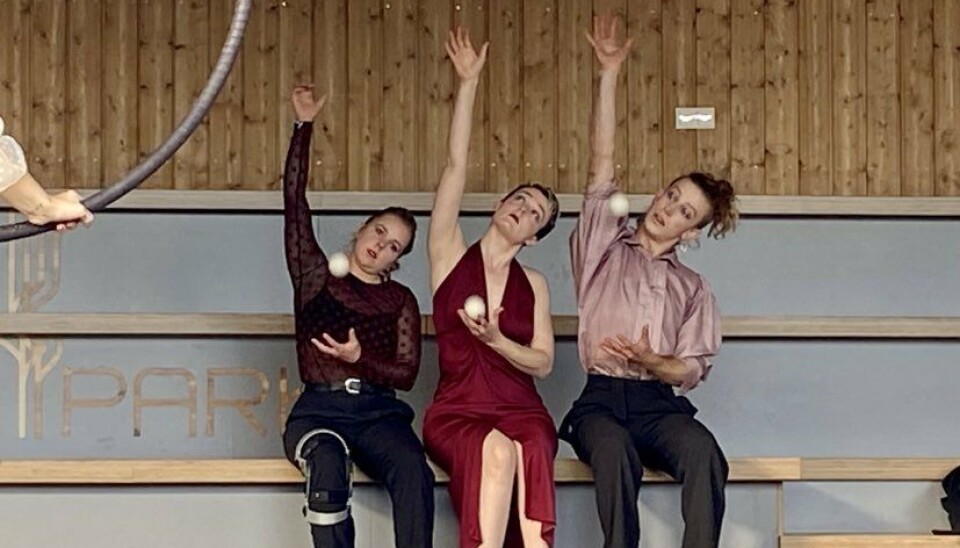
I left wishing I could spend a few more days here, realizing how valuable it was for me to get out of my own head for a while and hang out with family. I’ve been reading a lot of sobering stuff about forced migration, injustice, and life challenges as part of my thesis research. Important stuff, for sure, but, as Solveig points out, I talk about it incessantly and that sense of heaviness is there all the time, a blanket I have pulled around me. After spending just a day at Festival Circolo with my kid, I could feel a lightness entering in. I’ve learned something about her, about me, about the projects we’ve independently embarked upon, and how the gravity of these affects us.
On the train ride back to Amsterdam, I googled The Unbearable Lightness of Being, the Milan Kundera novel from which Solveig’s show had taken its title. I read it a lifetime ago, and only faintly remembered the themes. I found this quote, a metaphor of embodiment, and something I’ll take as a reminder to myself on the importance of seeking balance and perspective. It also says something about what it means to be a human and how we make sense of these connections to our histories and one another:
The heavier the burden, the closer our lives come to the earth, the more real and truthful they become. Conversely, the absolute absence of burden causes man to be lighter than air, to soar into heights, take leave of the earth and his earthly being, and become only half real, his movements as free as they are insignificant. What then shall we choose? Weight or lightness?…
— Milan Kundera, The Unbearable Lightness of Being (1984)
